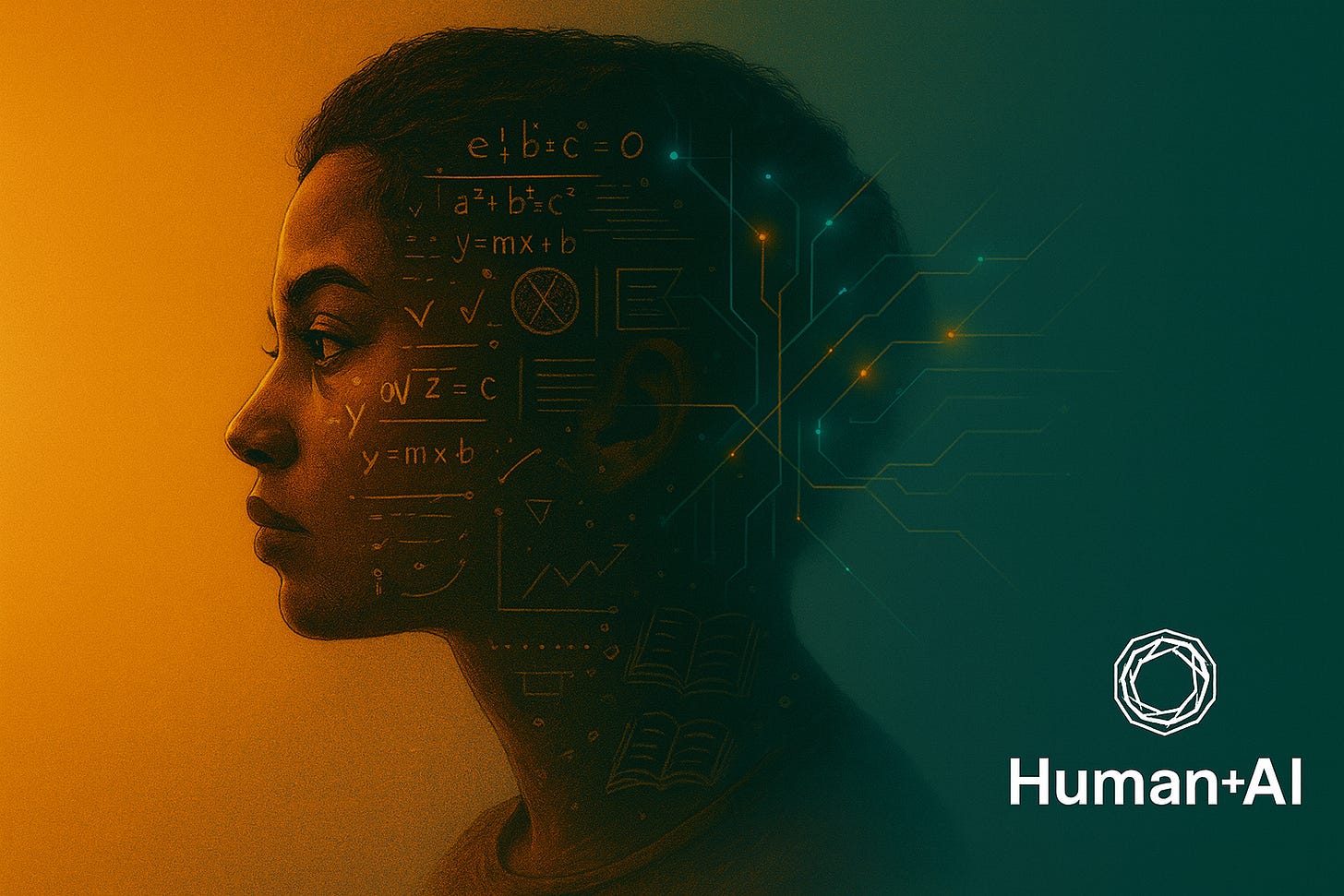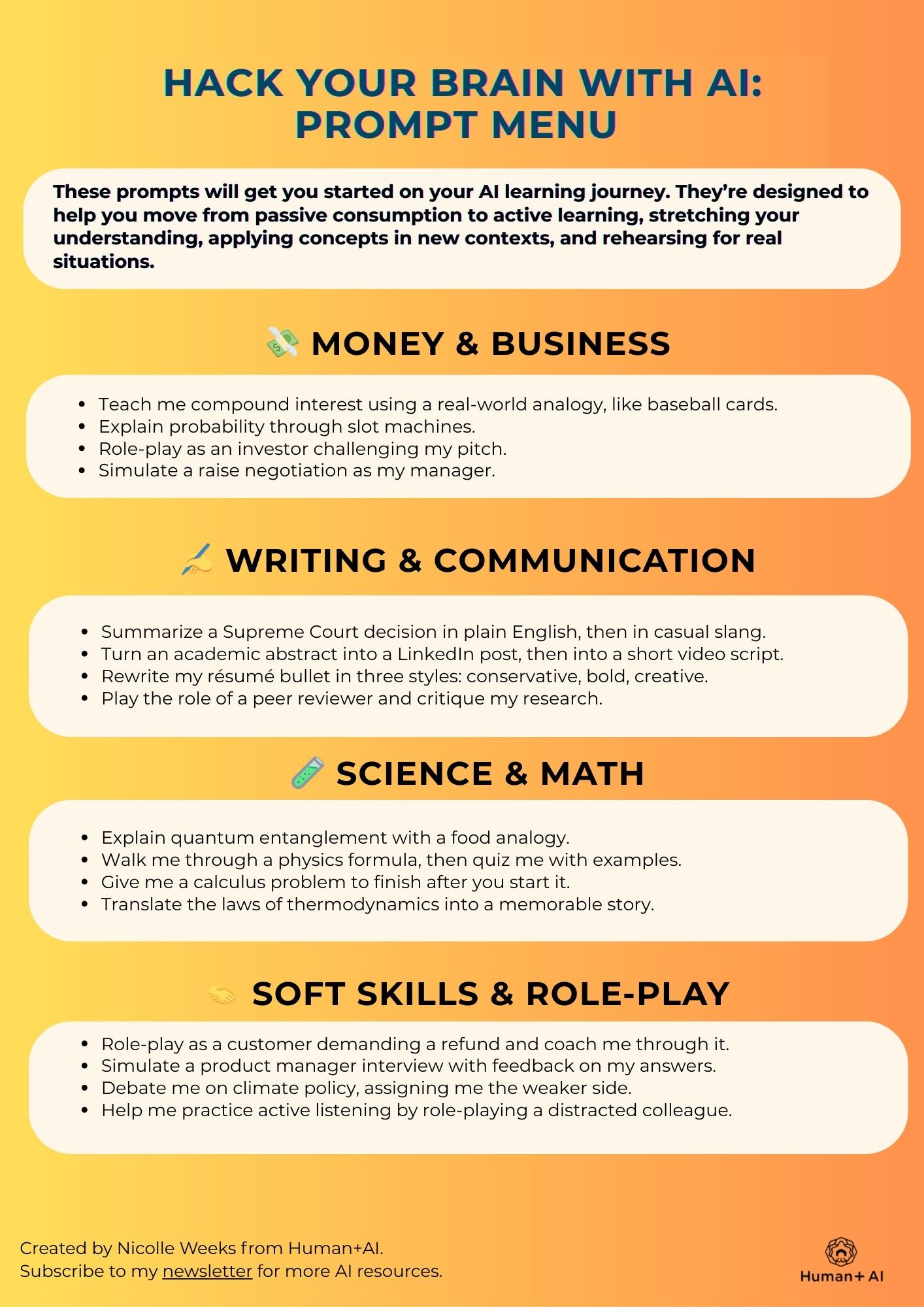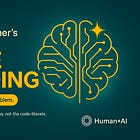AI is a mediocre writer. But it might be the best teacher you’ve ever had.
How to use AI as a personalized learning tool. (And a free download.)
AI is a mediocre writer. Let’s start there.
I’ve seen what happens when people try to let it ghostwrite their work. We’ve seen legal briefs filed with fake citations and financial columns at CNET so riddled with errors they had to be walked back. It litters its writing with “the plot twist”s and “here’s the thing”s and “actually”s.
People know when they’re reading garbage, and AI generates a lot of garbage. Trust drops in half if an audience suspects a piece of writing is AI-generated. Brands see their credibility sag. When machines write for us, a lot of the time, the result is slop. Sometimes it’s funny, sometimes it’s dangerous, often it’s forgettable.
If you’re using AI to cut corners, you’re missing the point.
From ghostwriter to coach
When I went beyond asking AI to write emails for me and started using it as a teacher, something shifted. I dusted off old projects where I’d hit a dead end and threw them at AI. I started to vibe code. It wasn’t perfect, but it helped me find errors and reminded me why I loved problem-solving in the first place. I started to reengage with things I’d given up on.
Generative AI can teach you how to learn differently.
AI as your personal tutor
This plays out in a lot of ways. In education, we’re seeing AI that asks questions, drops hints, and forces students to work through problems like the patient teacher you always wished you had.
OpenAI’s Study Mode explicitly pushes ChatGPT away from shortcut answers toward active learning. It provides step-by-step guidance, questions that gauge your level of understanding, and tailored practice.
Developers lean on tools like GitHub Copilot, not because the tools don’t make mistakes, but because they surface syntax patterns and flag issues. This behaviour is reflected in multiple industry surveys showing heavy day-to-day use of AI coding assistants.
Professionals are using AI to learn, too. They’re using it to rehearse difficult conversations, practice negotiation, and to deepen caregiver and leadership practice.
In these contexts, AI isn’t doing the work for you. It’s acting as your tutor.
Learn with AI
If you stop treating AI like a souped up Clippy, you can make it into something infinitely more useful: a learning partner. I don’t mean we should replace professors or teachers. But you can supplement your learning with AI that adapts to your pace, understanding, curiosity, and attention span.
With AI, you can say: “Explain quantum mechanics like I’m a child” … and it will. Ask again, and it’ll try a different metaphor. Push harder, and it’ll generate practice problems until Schrodinger’s cat makes sense.
How to learn with AI: a learning prompt formula in 5 Steps
1. Set the role (Teaching style)
→ Define how you want the model to teach you.
“Act as a patient math tutor for an 8-year-old…”
“Teach me like a university professor who uses real-world analogies…”
2. Define the goal (What to learn)
→ State the exact concept, skill, or subject.
“…help me understand compound interest.”
“…explain the basics of Python dictionaries.”
3. Structure the learning (How to deliver)
→ Ask for step-by-step explanation, examples, and checks for understanding.
“Explain step by step, then give me a simple example, then ask me a practice question.”
4. Input Level (Your background / assumptions)
→ Tell the model what you already know (or don’t).
“Assume I know nothing about finance.”
“I already understand variables in Python.”
5. Interaction / feedback (How you learn best)
→ Ask the model to pause, quiz, or adjust pace.
“Stop after each section to check my understanding.”
“If my answer is wrong, explain why and give me a simpler example.”
The formula
Prompt = [Role/Teaching Style] + [Goal] + [Structure] + [Input Level] + [Interaction/Feedback]
Example
Act as a patient math tutor. Teach me the concept of compound interest. Break it down step by step, then show me one worked example. Assume I know only basic multiplication. After explaining, give me one practice problem to solve, then check my answer and explain if I get it wrong.The fine print
Confident ≠ correct. Fact check like your job depends on it.
Input dictates output. Garbage in, garbage out.
Stay curious. AI doesn’t care if you’re bored. You have to push yourself.
Who thrives in the AI era
Forget “I use ChatGPT.” The real flex is: “I know where and how it fails.”
The winners of this era will be the ones who treat AI like a coach, mentor, or lab partner while staying in the driver’s seat.
Here’s a free downloadable prompt menu you can use to help you learn:
Free download:
Help train this newsletter's neural networks with caffeine!
⚡️ Buy me a coffee to keep the AI insights coming. ☕️
AI in the news
Cost of a data breach report 2025 (IBM report) Generative AI is giving attackers the ability to create convincing phishing campaigns in minutes instead of hours, making social engineering faster and easier to scale. What once took 16 hours can now be done in as little as five minutes, raising the stakes for cybersecurity.
Meet the guys betting big on AI gambling agents (Wired) Startups and solo hustlers are rushing to fuse AI with online gambling, building tools that promise to give bettors an edge or place bets automatically, though most results so far have been shaky at best.
OpenAI announces AI-powered hiring platform to take on LinkedIn (TechCrunch) OpenAI is building an AI-powered hiring platform, set to launch by mid-2026, that will match workers with employers and directly challenge LinkedIn (which is owned by Microsoft, OpenAI’s biggest backer). Alongside the jobs platform, OpenAI plans to offer AI fluency certifications through its Academy, positioning the company as both a job-matching service and a skills trainer in an era of looming AI-driven job disruption.







Agree with your take! When it shows me a new way to think about something or learn about something